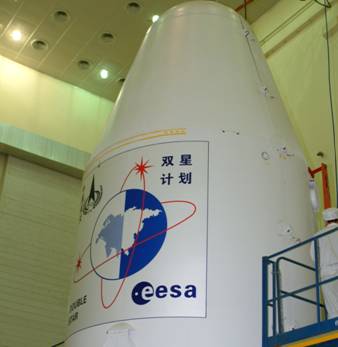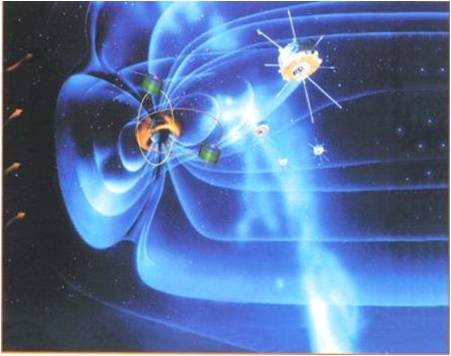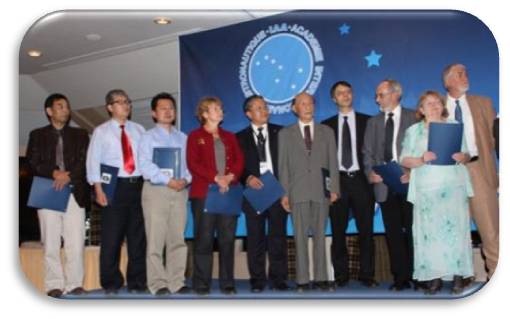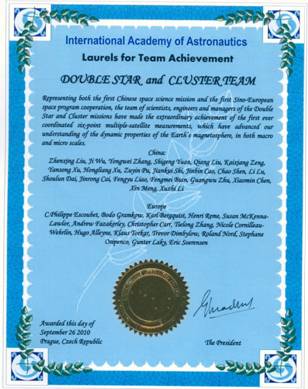Geospace Double Star Exploration Program (DSP) is the first space science satellite mission in China and the first grand international cooperative space science project of China. It is a space program with two satellites orbiting in equatorial orbit and polar orbit respectively. It investigates the triggering mechanism of the magnetospheric storms and physical processes of the disastrous geospace weather during solar activities and interplanetary disturbance, and then establishes the models to describe and predict the spatial and temporal variations of the near-earth space environment.

DSP, an ESA and NSSC cooperative space science project. (Image by NSSC)

"Double Star, a project with Europe in which two satellites carried out research on magnetic storms from 2004 to 2007." ---Science Magazine 2011 MAY VOL 332 (Image by NSSC)
DSP, an important contribution to the international geospace exploration programs, coordinates with ESA's Cluster program to first realize the six-point space exploration of geospace in the human history. The DSP is composed of two small satellites, which are TC-1 and TC-2.

a six-point measurement to explore the geo-space (Image by NSSC)
The orbit of TC-1 is proposed with perigee at 550km, apogee at 66970km and inclination with 28.5deg. TC-1 will detect the processes of geomagnetic space storms in near-earth magnetotail and energy transference from solar wind to magnetosphere through dayside magnetopause.The orbit of TC-2 is proposed with perigee at 700km, apogee at 40000km and inclination with 90deg.

All systems go. TC-1 lifted off on Dec.30, 2003. (Image by NSSC)
TC-2 will detect energy transference form solar wind and near-earth magnetotail to polar region and upper atmosphere, as well as to detect ionized particles transference from ionosphere to magnetosphere. The orbits of DSP are just in the main active region of magnetospheric storm, substorm and particle storm where not covered by the ISTP missions. Cooperated with each other, TC-1 and TC-2 compose an independent constellation-like exploring system in investigating the geospace storms.

TC-2 launched on Jun. 25, 2004. (Image by NSSC)
The data reception will be undertaken jointly by Miyun Station of Beijing, Sheshan station of Shanghai, and also Villafranca station of ESA.
DSP together with Cluster achieved a great number of scientific discoveries and research results. It was granted the first prize of the 2010 National Science and Technology Progress Award. DSP and Cluster team were awarded the Laurels for Team Achievement Award by the International Academy of Astronautics (IAA) in 2010, which is the first time that China received grand international scientific award in space field.

Laurels for Team Achievements---2010 Cluster and Double Star Team (Image by NSSC)

Laurels for Team Achievement awarded by IAA (Image by NSSC)


